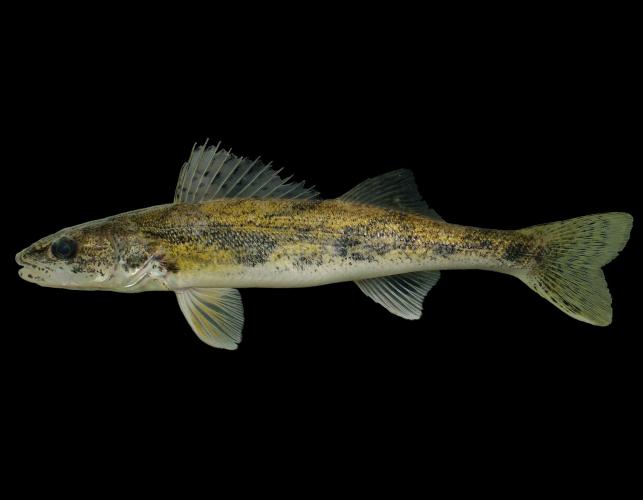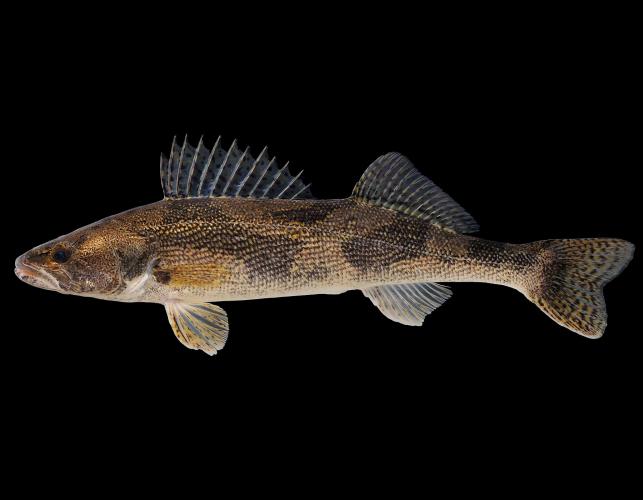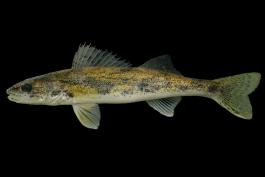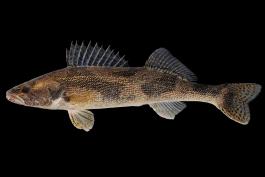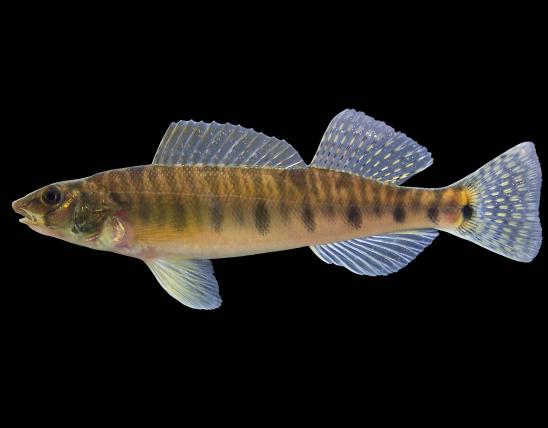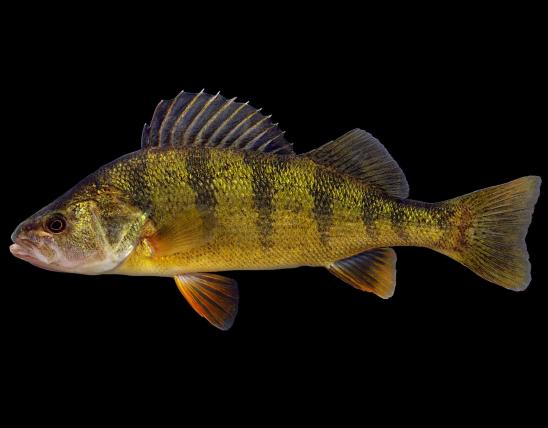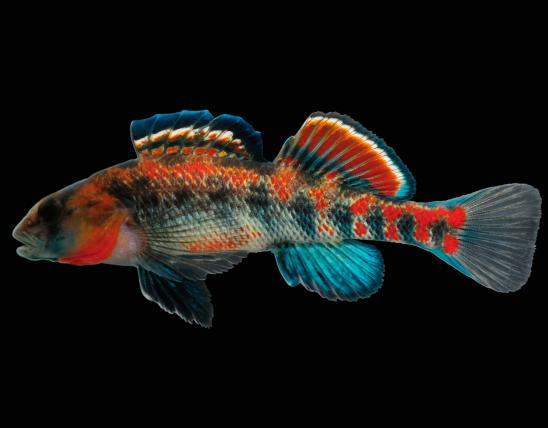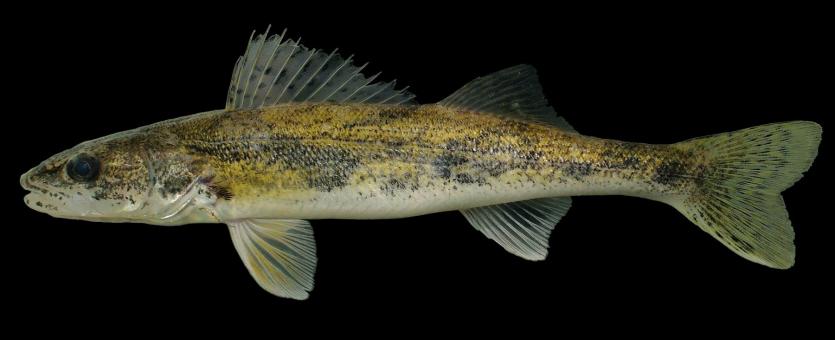
The sauger is a slender, spiny-rayed fish with 2 separate dorsal fins and a large mouth, the upper jaw extending to about the hind edge of the eye. The hind edge of the bone just ahead of the gill cover is strongly saw-toothed, and the tail fin is distinctly forked.
The sauger can be distinguished from the closely related walleye using these characteristics:
- Sauger has distinct dark blotches or “saddle marks” on the sides.
- There are dark spots on the first dorsal fin.
- The first dorsal fin lacks a dark blotch near the base of the last few dorsal spines.
- Scales are present on the cheek.
- The lower lobe of the tail fin either lacks a white blotch, or, if a blotch is present, it is reduced.
- Sauger are generally smaller than walleye.
Note that sauger occasionally interbreed with walleye where their ranges overlap to produce “saugeye.” The hybrid shares characteristics of both parents, making identification difficult.
Total length: 12–15 inches; weight commonly 2½ pounds, with maximum to 4 pounds.

Occurs mostly in the Mississippi and Missouri rivers and suitable tributaries, as well as the Eleven Point River in southern Missouri.
Habitat and Conservation
Occurs principally in large, free-flowing streams. Found mainly in flowing water and often swift current. Sauger are most active during low light periods or during daylight in highly turbid water. Sauger are more tolerant of turbidity (murky water) than walleye.
Compared to walleye, sauger has a more restricted distribution in our state, although it is the most abundant of the two species in the Missouri and Mississippi rivers. Elsewhere in Missouri, the walleye generally predominates. In our state, it is exclusively a fish of flowing waters.
Food
A variety of fish, crustaceans, and insects.
Status
Game fish.
Life Cycle
Walleye can live 7 to 10 years. Spawning occurs in early spring, often at night. In the Iowa portion of the Missouri River, the adhesive eggs were deposited over rubble shoals, especially where filamentous algae existed.
Human Connections
The sauger is an excellent sport fish but is less sought after than the walleye because of its smaller size and more restricted distribution. Although some sauger are caught in most large Missouri streams, the most significant fishery is in the upper Mississippi River. This stretch of river provides excellent sauger fishing from about Labor Day until freeze-up.
Sauger may be taken by the same methods that are effective for walleye. Most of the fishing on the upper Mississippi River is with minnows trolled slowly over the bottom in swift, rocky areas just below navigation dams.
Ecosystem Connections
The eye of the sauger apparently is even better adapted to low-light conditions than the walleye, which may account for its greater tolerance for turbidity that partially blocks out sunlight.
